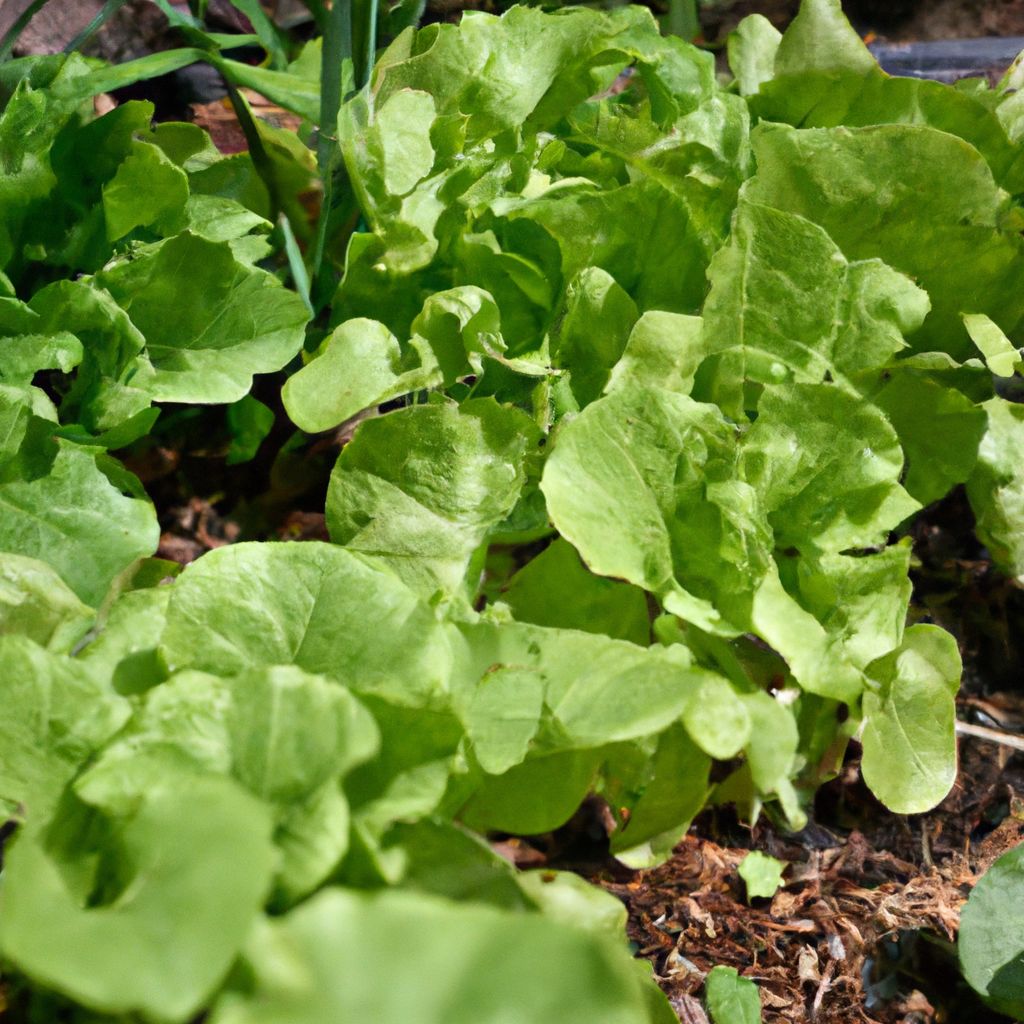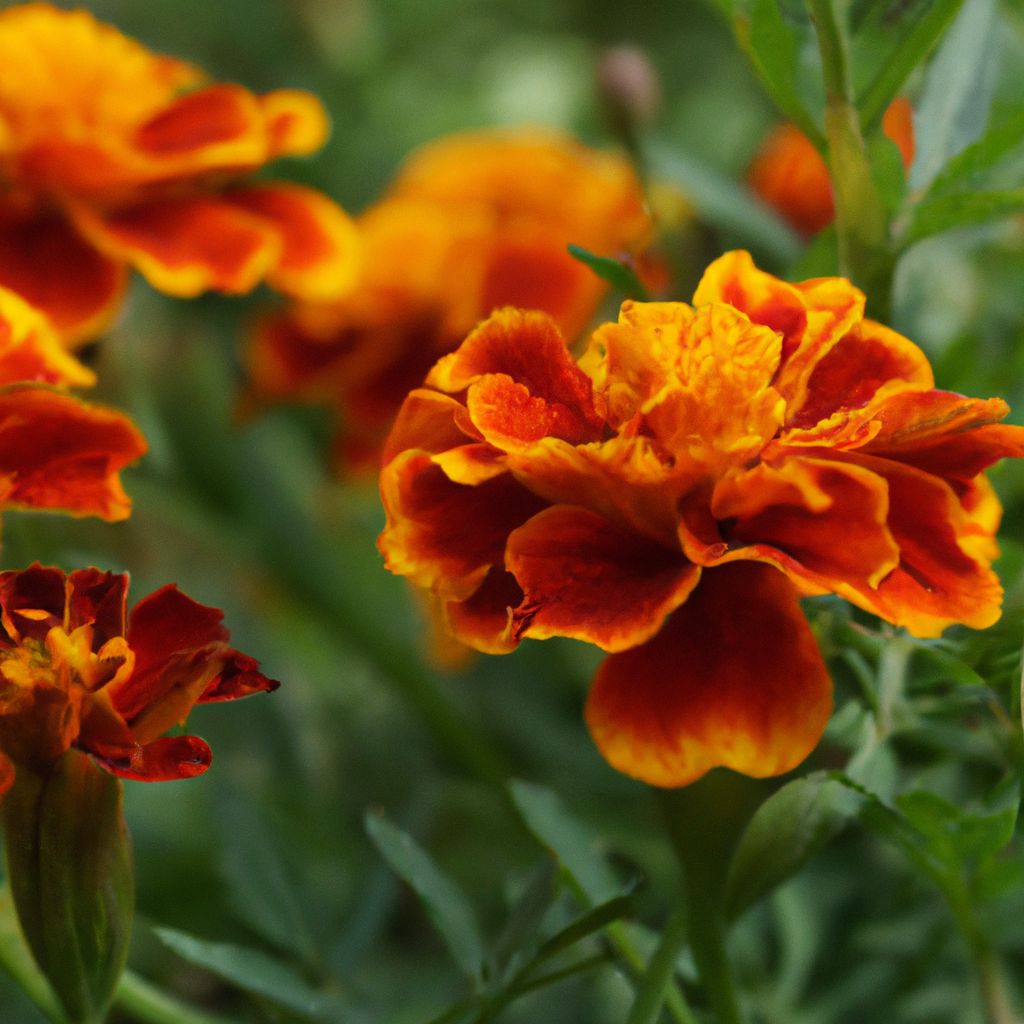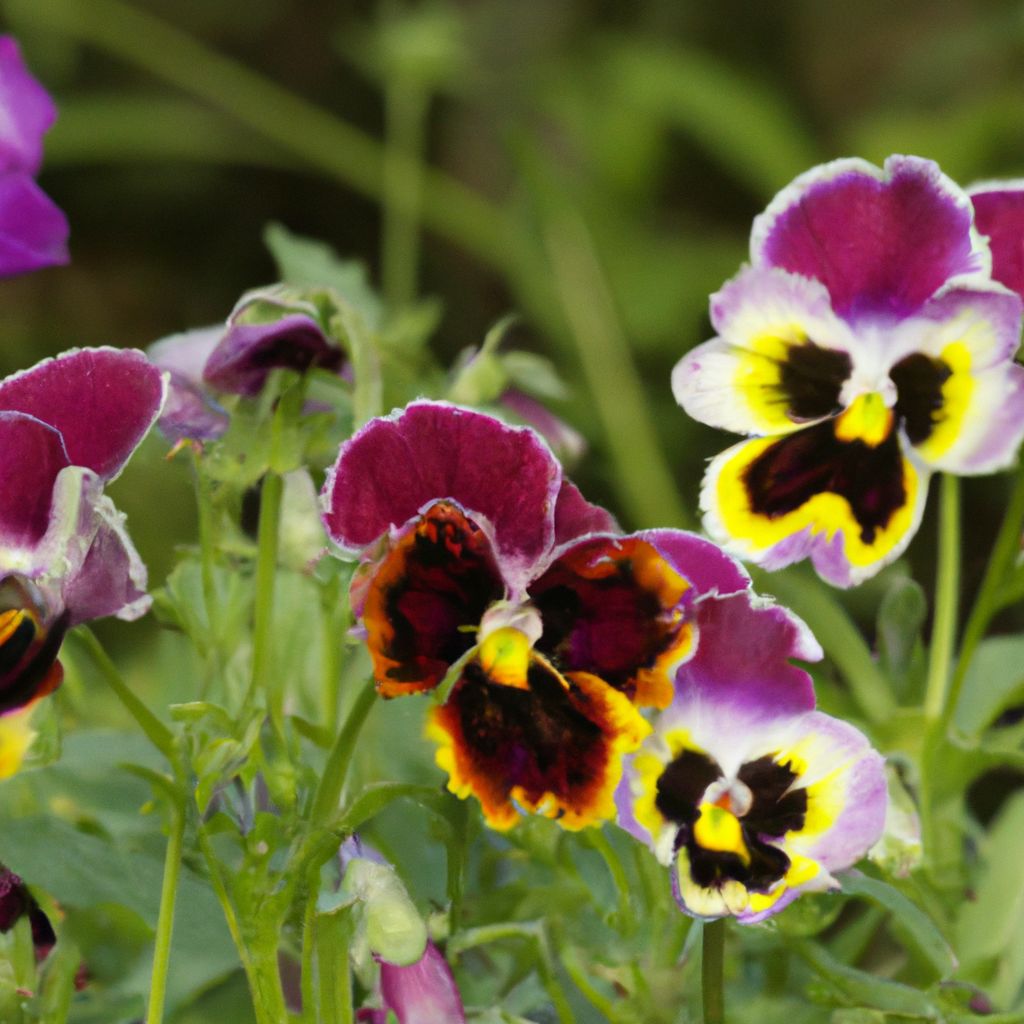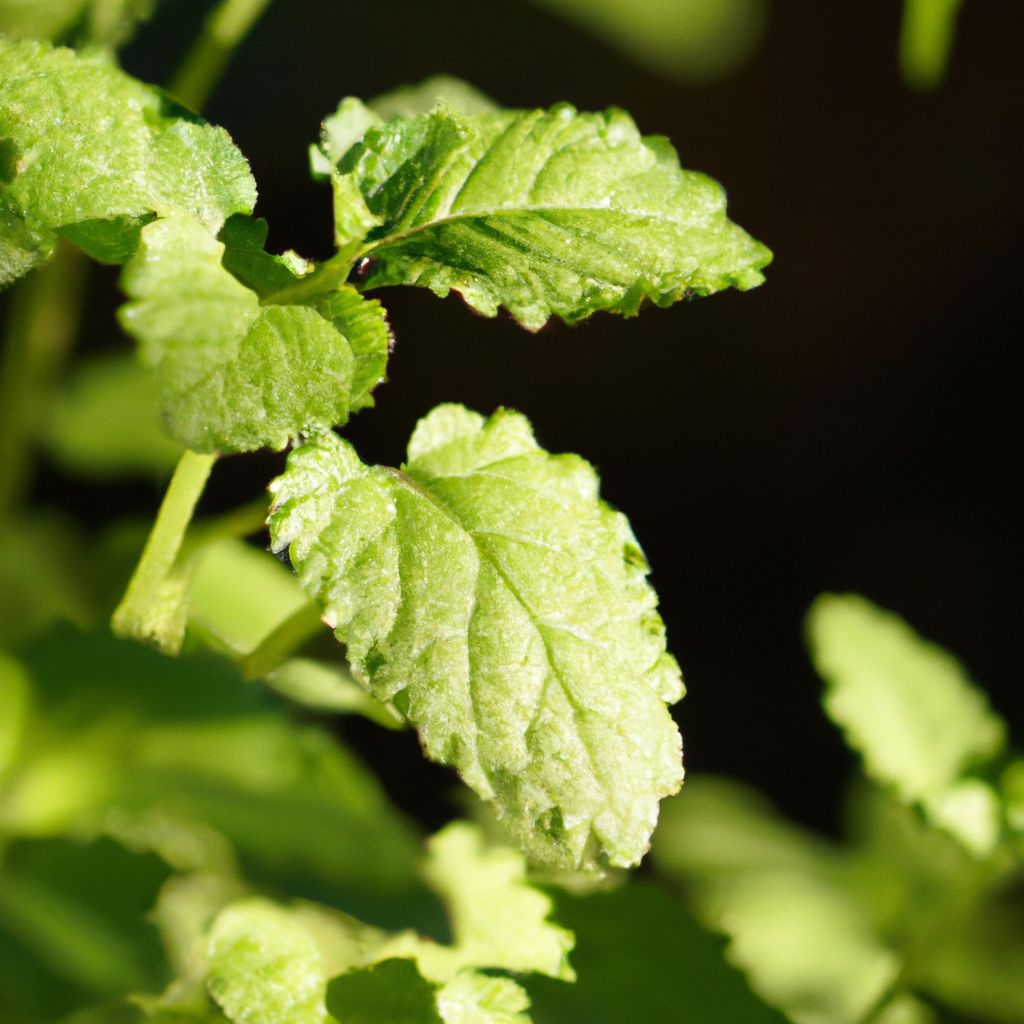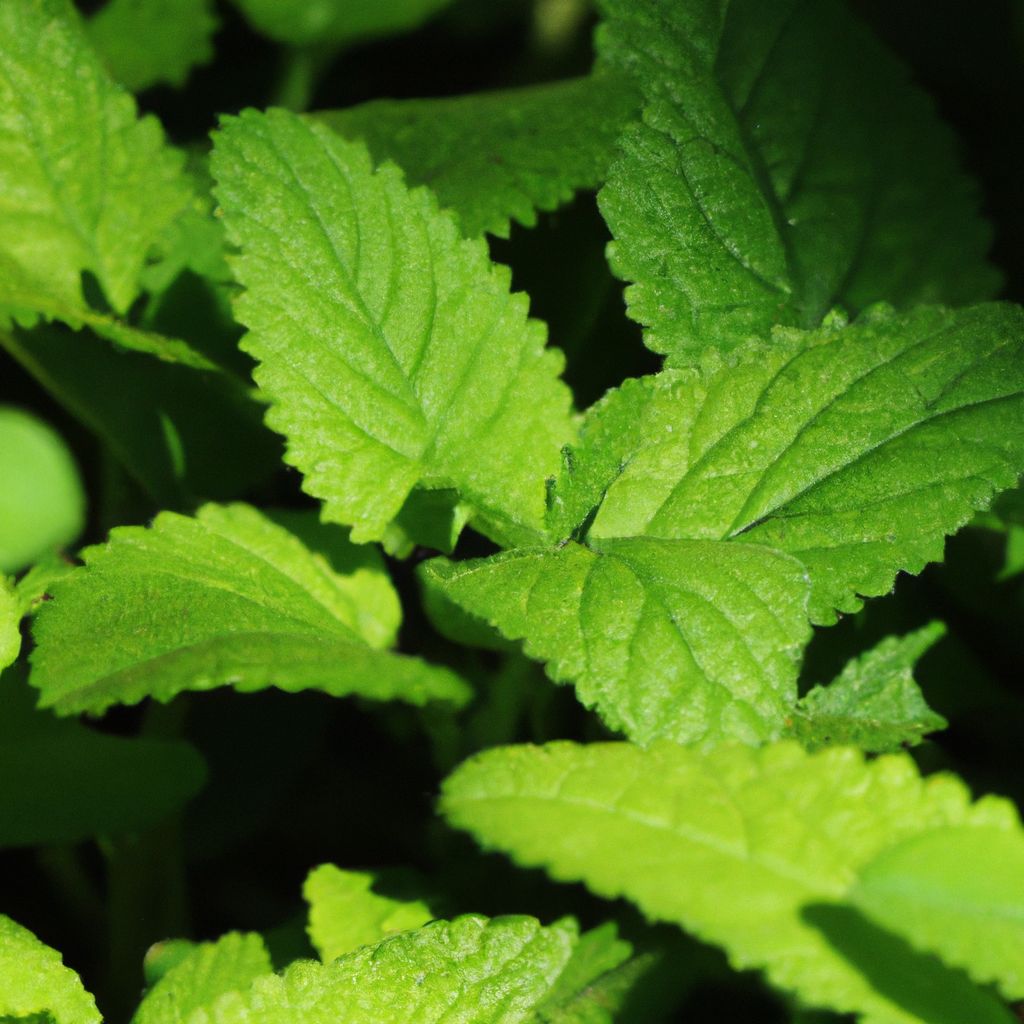As a dedicated gardener, ensuring the health and vitality of your vegetable plants is a top priority. One of the most significant threats to a bountiful harvest is the presence of diseases. Protecting your plants from these ailments requires a proactive approach that combines preventive measures and effective control strategies. Read this article to get top tips on vegetables disease control and find effective methods to protect your plants.
Identifying Common Vegetable Plant Diseases
The first step in safeguarding your vegetable plants is to familiarize yourself with the common diseases that can affect them. Early detection and accurate identification are crucial for implementing timely and effective control measures.
Powdery Mildew
- Description and Symptoms: Powdery mildew is a fungal disease that appears as a white, powdery substance on the leaves, stems, and fruits of vegetable plants. It can affect a wide range of crops, including cucurbits (cucumbers, squash, pumpkins), tomatoes, and cole crops (broccoli, cauliflower, kale). Affected leaves may become distorted, and in severe cases, the entire plant can be covered in the powdery growth, leading to reduced yields and plant vigor.
- Prevention and Control Methods: To prevent powdery mildew, ensure good air circulation around your plants by proper spacing and pruning. Additionally, choose resistant varieties when available. Avoid excessive nitrogen fertilization, as it can promote succulent growth, which is more susceptible to infection. If powdery mildew does occur, use organic fungicides like neem oil, sulfur, or horticultural oils. Prune and remove severely affected plant parts to prevent further spread.
Tomato Blight
- Description and Symptoms: Tomato blight, caused by the fungus Phytophthora infestans, is a devastating disease that can quickly ruin your tomato crop. Dark brown or black spots appear on the leaves, stems, and fruits, eventually leading to complete plant collapse. The disease can spread rapidly, especially in warm, humid conditions, and can quickly wipe out an entire tomato crop if left unchecked.
- Prevention and Control Methods: Implement crop rotation, maintain proper spacing between plants, and water at the base to prevent soil splashing. Avoid working in the garden when plants are wet, as this can spread the disease. Mulch around plants to prevent soil splashing. If blight strikes, promptly remove and destroy infected plants, and apply copper-based fungicides to protect healthy plants. Choose resistant tomato varieties for future plantings.
Fusarium Wilt
- Description and Symptoms: Fusarium wilt is a soil-borne fungal disease that primarily affects tomatoes, peppers, and melons. Infected plants will exhibit wilting, yellowing, and browning of the leaves and stems, even when the soil moisture is adequate. As the disease progresses, the entire plant may wilt and die, with the vascular system inside the stem appearing discolored or streaked.
- Prevention and Control Methods: Rotate your crops annually, practice good sanitation by removing and destroying infected plants, and choose resistant varieties. Maintain proper soil drainage and avoid overwatering. Solarize the soil by covering it with clear plastic for several weeks during the hottest part of the year to kill off pathogens. If fusarium wilt is present, remove and destroy affected plants immediately to prevent further spread.
Downy Mildew
- Description and Symptoms: Downy mildew is a fungal disease characterized by yellow or pale-green patches on the upper leaf surface, accompanied by a white or grayish growth on the lower surface. It thrives in cool, humid conditions and can affect crops like cucumbers, lettuce, basil, and spinach. The affected leaves may eventually turn brown and die, leading to significant yield losses.
- Prevention and Control Methods: Plant resistant varieties, improve air circulation around plants, and water in the morning to allow foliage to dry. Avoid overcrowding plants and promote good air flow. Apply organic fungicides like copper or potassium bicarbonate at the first sign of infection. Remove and destroy severely affected plant parts to prevent further spread.
Bacterial Leaf Spot
- Description and Symptoms: Bacterial leaf spot is caused by various bacteria and is characterized by small, water-soaked lesions on the leaves that eventually turn dark and necrotic. It can affect a wide range of vegetable crops, including tomatoes, peppers, and brassicas. In severe cases, the lesions can coalesce, leading to extensive leaf damage and defoliation, which can significantly impact plant productivity.
- Prevention and Control Methods: Practice crop rotation, maintain proper plant spacing, and avoid overhead watering. Water plants at the base or use drip irrigation to prevent splashing and spread of bacteria. Remove and destroy infected plant material promptly, and apply copper-based bactericides to protect healthy plants. Maintaining good garden hygiene and avoiding working in the garden when plants are wet can also help prevent the spread of bacterial leaf spot.
Preventive Strategies for Healthy Plants
Implementing preventive strategies is crucial for maintaining the health of your vegetable plants and minimizing the risk of diseases. These strategies not only help prevent the occurrence of diseases but also promote overall plant vigor and productivity.
Crop Rotation
- Definition and Importance: Crop rotation is the practice of growing different crops in the same area over successive growing seasons. This practice helps to disrupt disease cycles and prevent the buildup of pathogens in the soil. By rotating crops from different plant families, you can effectively break the life cycles of soil-borne pests and diseases that are specific to certain crops.
- Implementation Guidelines:
- Group crops into different families (e.g., nightshades, cucurbits, brassicas).
- Avoid planting crops from the same family in the same location for at least three years.
- Keep detailed records of your crop rotation plan to ensure proper rotation.
- Incorporate cover crops into your rotation to improve soil health and suppress weeds.
- Plan your rotation based on the specific disease risks in your area and the susceptibility of different crop families.
Proper Spacing
- Significance of Adequate Spacing: Proper spacing between plants is essential for promoting good air circulation, which helps prevent the spread of fungal diseases and reduces the risk of disease transmission from plant to plant. Overcrowded plants create a humid microclimate that can foster disease development.
- Spacing Recommendations:
- Consult seed packets or plant labels for recommended spacing guidelines.
- Consider the mature size of the plants when determining spacing distances.
- Provide adequate space between rows to allow for easy access and maintenance.
- Thin out seedlings or transplants to the recommended spacing once they have established.
- For vining crops like cucumbers or squash, use trellises or support structures to keep plants off the ground and improve air flow.
Watering Techniques
- Consistent Watering: Maintaining consistent soil moisture levels is crucial for plant health. Drought stress can weaken plants, making them more susceptible to diseases. Ensure that your plants receive adequate water, but avoid overwatering, which can lead to other problems.
- Avoiding Overwatering: Overwatering can lead to waterlogged soil conditions, which can promote the growth of fungal diseases and root rot. It can also create an environment conducive to the development of bacterial diseases, as many plant pathogens thrive in wet conditions.
- Water at the Base: Watering plants at the base of the stem or using drip irrigation systems helps prevent water from splashing onto the foliage, reducing the risk of disease transmission. Overhead watering can spread fungal spores and bacteria from the soil onto the leaves and stem, increasing the likelihood of infection.
- Morning Watering: Water your plants in the morning hours, allowing the foliage to dry before nightfall. Wet leaves overnight can create an ideal environment for disease development, as many fungal pathogens require prolonged moisture to germinate and infect plants.
- Drip Irrigation: Utilizing drip irrigation systems delivers water directly to the root zone, minimizing water loss through evaporation and reducing the risk of foliar diseases. Drip systems also help maintain consistent soil moisture levels, which can improve plant health and disease resistance.
Mulching
- Moisture Retention: Applying a layer of organic mulch around plants helps retain soil moisture, reducing the need for frequent watering and minimizing water stress on plants. Maintaining optimal soil moisture levels can enhance plant vigor and disease resistance.
- Weed Suppression: Mulch acts as a barrier, preventing weed growth and reducing competition for nutrients and water, which can weaken plants and make them more susceptible to diseases. Weeds can also harbor pests and diseases, so suppressing their growth can help reduce disease pressure in your garden.
- Temperature Regulation: Mulch insulates the soil, maintaining a more consistent soil temperature and protecting plant roots from extreme temperature fluctuations. This can promote healthy root growth and prevent
- Soil Health: As organic mulches decompose, they contribute valuable organic matter to the soil, improving soil structure, water-holding capacity, and nutrient availability for plants. Healthy, nutrient-rich soil can enhance plant vigor and disease resistance.
- Mulch Types: Consider using organic mulches like wood chips, shredded leaves, straw, or grass clippings around your vegetable plants. These materials will gradually break down, adding beneficial nutrients to the soil while suppressing weeds and retaining moisture.
Building Healthy Soil
- Soil Testing: Conduct a soil test to determine the nutrient levels and pH of your soil. This information will guide you in making appropriate amendments to optimize soil health. A balanced soil pH and adequate nutrient levels are essential for plant growth and disease resistance.
- Adding Organic Matter: Incorporate well-decomposed compost, aged manure, or other organic materials into your soil to improve structure, drainage, and nutrient-holding capacity. Organic matter promotes a healthy soil ecosystem, which can help suppress soil-borne diseases.
- Minimal Tilling: Excessive tilling can disrupt the soil structure and destroy beneficial microorganisms, such as fungi and bacteria that help suppress plant pathogens. Practice minimal tillage or no-till methods to preserve soil health and minimize disturbance to the soil ecosystem.
- Crop Rotation: As mentioned earlier, rotating crops helps prevent the buildup of soil-borne pathogens and maintains soil fertility. It also encourages a diverse soil microbial community, which can contribute to disease suppression.
- Cover Crops: Growing cover crops, such as legumes or grasses, during the off-season can help improve soil structure, suppress weeds, and add organic matter to the soil. Cover crops can also help prevent soil erosion and nutrient leaching.
Control Measures for Existing Diseases
If disease strikes your vegetable plants, implementing control measures is crucial to prevent further spread and minimize damage. These measures should be taken promptly and consistently to effectively manage the disease.
Identifying the Disease
- Carefully examine your plants for signs of disease, such as wilting, leaf spots, discoloration, or abnormal growth patterns.
- Take note of the specific symptoms and the plant parts affected (leaves, stems, fruits, or roots).
- Consider the environmental conditions (temperature, humidity, and moisture levels) that may contribute to disease development.
- If necessary, consult with a local extension service, university plant disease clinic, or garden center for assistance in accurately identifying the disease.
Removing Infected Plants
- Act quickly to remove any plants showing severe disease symptoms or signs of advanced infection.
- Use clean, sharp pruning shears or scissors to remove infected plant parts, ensuring to cut well below the affected area.
- Dispose of the infected plant material properly by burning, burying, or placing it in a sealed plastic bag for removal from the garden.
- Avoid composting infected plant material, as many pathogens can survive the composting process.
- Disinfect your pruning tools after use to prevent the spread of disease to healthy plants.
Sanitizing Tools and Equipment
- Disinfect all gardening tools, including pruners, shovels, hoes, and garden stakes, after use to prevent the spread of diseases from one plant to another or from one area of the garden to another.
- Use a 10% bleach solution or a commercial disinfectant specifically designed for gardening tools.
- Allow the tools to air dry completely before storing them.
- Clean and disinfect garden tools regularly, even if no diseases are present, as a preventive measure.
- Consider having separate sets of tools for different areas of the garden to minimize disease transmission.
Natural Remedies
- Neem Oil: Derived from the neem tree, neem oil is a versatile natural remedy with antifungal, antibacterial, and insecticidal properties. It can be effective in controlling powdery mildew, black spot, and other fungal diseases. Neem oil can also help manage insect pests, which can transmit or exacerbate plant diseases.
- Garlic Spray: Garlic has natural antimicrobial and antifungal properties, making it a useful natural remedy for plant diseases. To create a garlic spray, blend several cloves of garlic with water and a small amount of mild soap or horticultural oil. Strain the mixture and spray it on affected plants, focusing on the undersides of leaves.
- Milk Spray: Surprisingly, milk can be an effective preventative treatment for powdery mildew. The alkaline nature of milk creates an unfavorable environment for the fungus to grow. Dilute one part milk with two parts water and spray it on plants, ensuring good coverage.
- Copper-based Fungicides: Copper-based products, such as copper sulfate or Bordeaux mixture, have long been used as natural fungicides. They are effective against a range of fungal diseases, including downy mildew, early blight, and bacterial diseases like fire blight and bacterial leaf spot. Always follow label instructions carefully when using copper-based products.
- Compost Tea: Compost tea is a liquid solution made by steeping high-quality compost in water, which extracts beneficial microorganisms and nutrients. When sprayed on plants, compost tea can help boost their immune system and suppress disease-causing pathogens. It’s essential to use mature, well-composted material and follow proper brewing techniques.
Organic Pesticides
When natural remedies are not sufficient, organic pesticides derived from natural sources can be effective tools for controlling plant diseases. These products are generally safer for the environment and human health compared to synthetic pesticides. Some examples of organic pesticides include:
- Neem Oil: In addition to its use as a natural remedy, neem oil is also registered as an organic pesticide for controlling various fungal diseases, as well as insect pests.
- Bacillus Subtilis: This beneficial bacterium is used as a biological fungicide and can help prevent and control diseases like powdery mildew, early blight, and Botrytis.
- Copper Octanoate: A synthetic form of copper that is approved for organic gardening, copper octanoate is effective against bacterial diseases like fire blight and bacterial spot.
- Sulfur: Elemental sulfur is a versatile organic fungicide that can be used to control powdery mildew, rust, and other fungal diseases on a wide range of plants.
- Spinosad: Derived from a naturally occurring soil bacterium, spinosad is an organic insecticide that can help manage insect pests, which can transmit or exacerbate plant diseases.
Always read and follow the label instructions carefully when using any organic pesticide, and consider integrating them into a comprehensive Integrated Pest Management (IPM) program for best results.
Fungicides
In cases where organic methods are not sufficient, conventional fungicides can be a valuable tool in controlling fungal diseases on vegetable plants. However, it’s essential to use them judiciously and follow all label instructions carefully. Some commonly used fungicides for vegetable plants include:
- Chlorothalonil: A broad-spectrum fungicide effective against various fungal diseases like early blight, late blight, and downy mildew. It should be applied at the first sign of disease for optimal control.
- Mancozeb: Specifically useful for protecting against early and late blight in tomatoes and potatoes, mancozeb is a dithiocarbamate fungicide that can also control certain fungal leaf spots.
- Copper Fungicides: As mentioned earlier, copper-based fungicides like copper hydroxide and copper sulfate are effective against a range of fungal and bacterial diseases, including downy mildew, powdery mildew, and fire blight.
- Azoxystrobin: A strobilurin fungicide that is particularly useful for controlling powdery mildew, early blight, and other fungal diseases in a wide range of vegetable crops.
- Mefenoxam: This systemic fungicide is commonly used to control soil-borne diseases like Pythium and Phytophthora root rots, as well as downy mildew in certain crops.
Remember to follow resistance management guidelines and rotate between different fungicide modes of action to prevent the development of resistant strains of pathogens.
Bactericides
While fungicides are effective against fungal diseases, controlling bacterial diseases often requires the use of specific bactericides. These products are designed to target and eliminate the bacteria that cause diseases like bacterial leaf spot, fire blight, and bacterial wilt.
- Copper-based Bactericides: Copper compounds like copper hydroxide, copper sulfate, and copper octanoate are commonly used as bactericides in vegetable gardens. They are effective against a wide range of bacterial diseases and can also provide some control of fungal diseases.
- Streptomycin: This antibiotic is specifically labeled for controlling fire blight in apple and pear trees, but it can also be used on certain vegetable crops to manage bacterial diseases like bacterial spot and bacterial speck.
- Kasugamycin: Derived from a naturally occurring bacteria, kasugamycin is a bactericide that can be used on a variety of vegetable crops to control bacterial diseases like bacterial blight, bacterial spot, and bacterial wilt.
- Oxidate: This broad-spectrum bactericide and fungicide, containing hydrogen dioxide as the active ingredient, can be used on a wide range of crops to control bacterial and fungal diseases.
It’s important to note that overuse or misuse of bactericides can lead to the development of antibiotic-resistant strains of bacteria, which can make these products less effective over time. Therefore, it’s crucial to follow label instructions carefully, rotate between different modes of action, and integrate bactericides into a comprehensive disease management program that includes cultural practices and other control methods.
Gardening Best Practices for Healthy Vegetables
In addition to the preventive and control measures mentioned above, following these gardening best practices can contribute to the overall health of your vegetable plants and reduce the risk of disease.
Maintaining a Healthy Environment
- Remove plant debris and trim unhealthy foliage regularly to eliminate potential sources of disease inoculum.
- Water plants in the morning and avoid wetting foliage to discourage disease development.
- Use mulch to retain moisture, suppress weeds, and regulate soil temperature, creating an unfavorable environment for many diseases.
- Provide good air circulation for plants by maintaining proper spacing and pruning to promote rapid drying of foliage.
- Inspect plants for diseases before bringing them home from the nursery or garden center to prevent introducing new pathogens to your garden.
Natural Approaches
- Plant disease-resistant varieties of vegetables when available. Many seed companies now offer cultivars bred specifically for resistance to common diseases.
- Implement crop rotation, as discussed earlier, to prevent the buildup of soil-borne pathogens and break disease cycles.
- Use composted manure or other organic fertilizers to improve soil health and promote a diverse microbial community that can help suppress plant diseases.
- Introduce beneficial insects like lacewings, ladybugs, and praying mantis to control harmful insects that can transmit or exacerbate plant diseases.
- Make use of natural insecticides such as neem oil, insecticidal soaps, or horticultural oils to manage insect pests that can spread diseases.
Preventing Pests and Diseases
- Practice good sanitation by removing dead plant material, fallen fruits or vegetables, and other debris from the garden area. This helps eliminate potential sources of disease inoculum.
- Choose pest and disease-resistant plant varieties suitable for your area to reduce the risk of infection and infestation.
- Implement proper watering practices and avoid overwatering, which can create conditions favorable for many diseases.
- Regularly inspect plants for signs of insect eggs or infestation, as well as any early symptoms of disease.
- Apply appropriate action, such as hand-picking visible bugs or using organic pesticides, at the first sign of infestation or disease.
Preventing Leaf Spots and Other Common Diseases
- Practice site selection by choosing a well-drained and sunny location for your vegetable garden. Poor drainage and excessive shade can increase disease risk.
- Ensure crop rotation, avoiding continuous plantings of the same vegetable family in the same spot. Rotating crops helps break disease cycles.
- Use disease-free seed and transplants to minimize the risk of introducing diseases to your garden from the start.
- Maintain proper spacing and trellising to reduce the occurrence of foliar diseases by improving air circulation and reducing moisture buildup on foliage.
- Avoid overhead watering and keep foliage dry to prevent the spread of diseases like leaf spots, downy mildew, and powdery mildew.
Tips for Cool-Season Crops
- Take advantage of Georgia’s long cool season from fall through spring to grow cool-season crops like lettuce, broccoli, and peas.
- Follow sound cultural practices, such as maintaining a healthy soil and proper water management, to promote plant health and disease resistance.
- Select disease-resistant varieties of cool-season crops to minimize the risk of infections.
- Avoid excessive nitrogen fertilization, as it can lead to lush, succulent growth that is more susceptible to diseases.
- Ensure adequate spacing between plants to promote air circulation and discourage disease development.
Dealing with Sickly Plants and Plant Debris
- Remove the diseased plant parts as soon as possible to prevent the spread of disease to other parts of the plant or to nearby plants.
- Avoid composting diseased plant material to minimize the survival of disease-causing organisms in your compost pile.
- Sanitize your gardening tools to prevent the transmission of diseases from one plant to another or from one area of the garden to another.
- Consider using natural sprays or organic pesticides if the problem persists and cultural controls are not sufficient.
- Consult a local gardening expert or extension service for further guidance if you are unable to identify or control the disease effectively.
Protect Your Vegetable Plants From Disease Now
Protecting your vegetable plants from diseases requires a comprehensive approach that combines preventive measures, effective control strategies, and gardening best practices. By identifying common diseases, implementing preventive strategies, and utilizing organic control measures when needed, you can cultivate a thriving vegetable garden and enjoy a bountiful harvest.
Remember, a proactive and vigilant approach is key to maintaining the health and vitality of your precious vegetable plants. Stay observant, follow recommended practices, and don’t hesitate to seek expert advice when needed. With dedication and care, you can overcome the challenges posed by plant diseases and enjoy the rewards of a successful and productive vegetable garden.











































